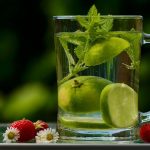Now that you’re lucky enough to be getting older, you might discover that when you go for a walk or take a ride on your bike, your body doesn’t respond the same way it did when you were younger. Maybe your muscles become more easily fatigued. You might lose your breath more quickly. Perhaps your legs get wobbly or you start feeling a little dizzy.
This might make you feel like you’re just not up to it anymore. But you can be!
You see, it doesn’t matter if you’re simply experiencing the results of an inactive lifestyle or have a more chronic condition going on – like reduced lung volume or peripheral artery disease. There’s a way to boost a compound in your body that is proven to enhance physical performance, endurance and stamina.
The Secret Ingredient for Improved Performance
When you participate in moderate to high intensity physical activity, your muscles demand plenty of fuel to function properly. How do they get it? Your blood delivers oxygen to your working muscles. Then, the oxygen breaks down glucose to create ATP – the energy your muscles need for maximum performance.
This means your body needs maximal oxygen uptake when you exercise. There’s actually a name for this. It’s called VO2 max – a measure of your cardiorespiratory fitness. (You can easily have it measured at certain doctor’s offices and sports centers.)
Now, here’s the thing. Your VO2 max levels decline about 10% every decade. This decline is associated with a decrease in physical activity. However, there is a way to improve VO2 max and improve oxygen uptake to every cell in your body.
What’s the secret ingredient? It’s a naturally occurring compound produced by your own body called nitric oxide, or NO for short. When you have enough of it, it can enhance your staying power and stamina when it comes to ramping up your physical activity.
Adequate levels of nitric oxide…
- Improves VO2 max by reducing the amount of oxygen needed by the lungs during physical exertion.
- Improves the energetic function of your muscles.
- Allows you to exercise longer before reaching exhaustion, even if you have COPD.
- Boosts exercise tolerance and performance.
- Decreases blood pressure.
- Oxygenates tissue in the legs and feet, which increases exercise tolerance in people with peripheral artery disease.
Plus, new research out of the University of Exeter finds nitric oxide helps increase muscle force during physical activity. Basically, it makes the muscles stronger. And to top it off, physical activity itself helps increase nitric oxide levels even further.
So, I’ll bet you’re chomping at the bit to find out how to regain your physical stamina and kick up your performance levels with nitric oxide.
How to Boost Your Nitric Oxide Levels
There are certain plant-based foods that contain natural nitrates. When you eat them, they go through a process in your body that results in the production of nitric oxide. (Don’t confuse these natural sources of nitrates with the potentially cancer-causing nitrates and nitrites added to deli meats and hot dogs.)
Green, leafy vegetables are good sources of nitrates. They are easy to come by, and can all be a part of your regular diet. Anything from arugula to spinach, kale to lettuce and cabbage to turnip greens will do the trick.
But one of the richest sources of NO-boosting nitrates is beetroot and beetroot juice. In fact, many studies on the health and exercise benefits of increased nitric oxide use concentrated beetroot to gauge the benefits.
You can also find nitric-oxide-boosting supplements. Just look for a plant-based NO enhancer that has beetroot juice as its main ingredient.
In the meantime, don’t curtail your physical activities just because they leave you short of breath or lead to muscle fatigue. Add greens to every meal. Eat your beetroots, drink beetroot juice or take a beetroot supplement.
Then, get out there and work it! For top results, alter the levels of intensity of your activity. For example, walk at normal speed for two or three minutes, then speed up to a brisk walk, jog or sprint for the next minute. Do this five to seven times. This type of interval training will offer the most long-term benefits for your health.
SOURCES:
Hawkins S, Wiswell R. Rate and mechanism of maximal oxygen consumption decline with aging: implications for exercise training. Sports Med. 2003;33(12):877-88.
Larsen FJ, Weitzberg E, Lundberg JO, Ekblom B. Dietary nitrate reduces maximal oxygen consumption while maintaining work performance in maximal exercise. Free Radic Biol Med. 2010 Jan 15;48(2):342-7.
Jones AM. Dietary nitrate supplementation and exercise performance. Sports Med. 2014 May;44 Suppl 1(Suppl 1):S35-45.
Kenjale AA, Ham KL, Stabler T, Robbins JL, Johnson JL, Vanbruggen M, Privette G, Yim E, Kraus WE, Allen JD. Dietary nitrate supplementation enhances exercise performance in peripheral arterial disease. J Appl Physiol (1985). 2011 Jun;110(6):1582-91.
Kerley CP, Cahill K, Bolger K, McGowan A, Burke C, Faul J, Cormican L. Dietary nitrate supplementation in COPD: an acute, double-blind, randomized, placebo-controlled, crossover trial. Nitric Oxide. 2015 Jan 30;44:105-11.
Kadach S, Park JW, Stoyanov Z, Black MI, Vanhatalo A, Burnley M, Walter PJ, Cai H, Schechter AN, Piknova B, Jones AM. 15 N-labeled dietary nitrate supplementation increases human skeletal muscle nitrate concentration and improves muscle torque production. Acta Physiol (Oxf). 2023 Mar;237(3):e13924.
Dyakova EY, Kapilevich LV, Shylko VG, Popov SV, Anfinogenova Y. Physical exercise associated with NO production: signaling pathways and significance in health and disease. Front Cell Dev Biol. 2015 Apr 2;3:19.


